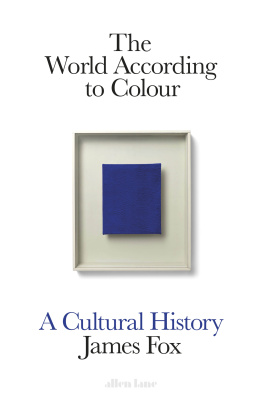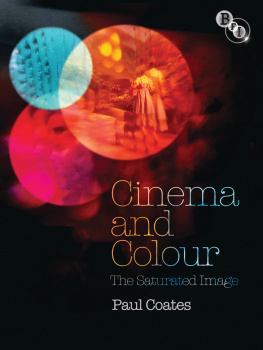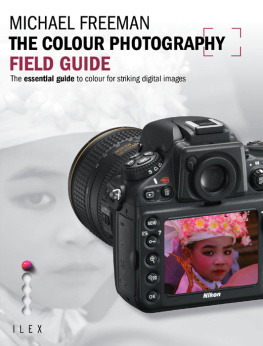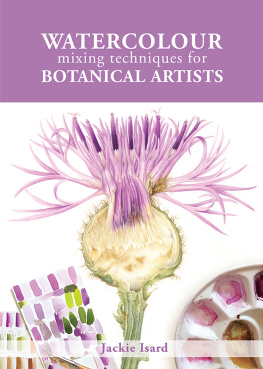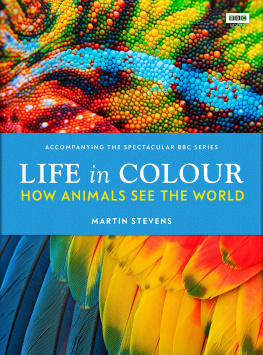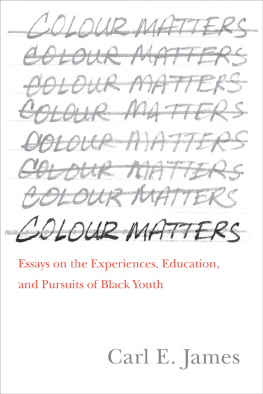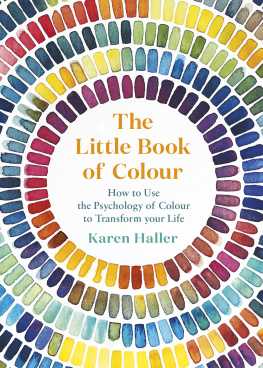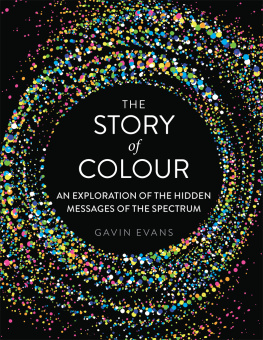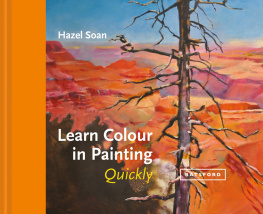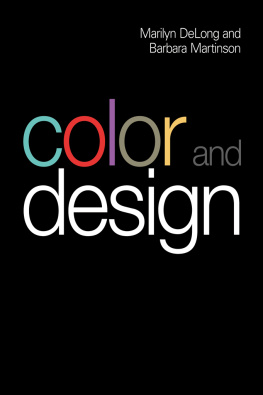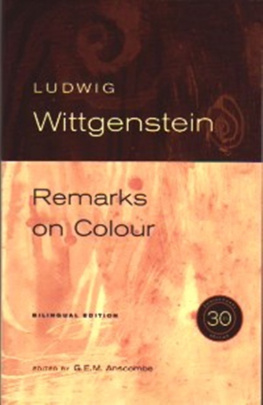About the Author
James Fox is Director of Studies in History of Art at Emmanuel College, Cambridge, and a BAFTA-nominated broadcaster. His many acclaimed BBC television documentaries include programmes about British art, Japanese culture and an enduringly popular history of colour in art.
Acknowledgements
This book has been a while in the making. It was originally conceived back in 2013 as a series of brief essays about colour in western art, and for a time I believed my own assurances that the project would be a straightforward one. But nothing about colour is straightforward. The more I researched the subject, the more it expanded, luring me down blind alleys and answering my questions with countless other questions. I repeatedly extended my chronological and geographical scope, and found myself straying into dozens of other disciplines. In the end I spent seven exhilarating years researching the subject, and then another one trying to distil my mountain of notes into a book.
Most of the investigative work was undertaken as a Fellow of Gonville and Caius College, Cambridge, where for five years my research was supported by a generous donation from Christopher and Shirley Bailey. Caius was particularly conducive to the interdisciplinary research that informs this book: the College counts among its Fellowship distinguished scholars in many fields, many of whom shared their considerable expertise with me. I am indebted to the neuroscientist John Mollon, who scoured a full draft of the book for scientific errors (he found several); to the theoretical physicist Will Handley, who had to explain the colours of the early universe to me more than once; to the archaeologist and anthropologist Manuel Will, who cast his eyes over my discussion of prehistoric humans; to Jens Scherpe, who helped me translate an esoteric Danish account of the discovery of the Trundholm Sun Chariot; and to John Casey, K.J. Patel, Alan Fersht and Robin Holloway, who supported me and challenged me throughout the writing process.
I am grateful too to my literary agent David Godwin, not least for introducing me to my publisher; to Stuart Proffitt, for commissioning the book, for his patience as I wrote it, and for his guidance at each of the many crossroads I reached; to my copy-editor David Watson, who endured last-minute revisions with good cheer; to Rebecca Lee, for steering the book through to publication; to Fiona Livesey and Ania Gordon, for sharing it with the world; and of course to my editor Ben Sinyor. Ben read my words with unflagging attention and intelligence throughout the process, making several critical interventions, and ultimately helping me to find the book I wanted to write.
The writing of this book didnt only make demands of me but of those to whom I am close. I am grateful to my father for going through an early draft (and calling it the most boring thing he had ever read after my doctoral dissertation), to my mother, whose weekly offerings of childcare allowed me to make many more journeys to the library than I could have hoped for, and to my parents-in-law Harshad and Liz Topiwala for the keys to their garden shed. When I lived there, working sixteen-hour days for several weeks at a time, the only thing that kept me going was Harshads Gujarati food. Above all, I am thankful to and thankful for my wife Kirty. She is my rock, my best friend, my sounding-board, my inspiration. And how can I forget my son Rafi, who crash-landed into our world in November 2018, and has filled our lives with colour ever since.
The World According to Colour
It is a defining trait of our species to produce and pursue meaning. We attach it to our experiences, to everyday events and to virtually everything in the world around us. Our quest for meaning informs every encounter and relationship, motivates every abstract thought, and underpins all of art and culture. We manufacture it every waking moment of every day, often without realizing we are doing so. Every time we open our mouths to utter a word, we are literally blowing meaning into the world. Those meanings may at some level be fictitious, but we consistently convince ourselves otherwise. After all, a satisfying fantasy is infinitely preferable to the alternative that existence itself is meaningless.
As soon as we were cognitively capable, we developed a swathe of practices language, ritual, myth, religion, art to impart significance to otherwise insignificant lives. They offered assurances that good fortune could be invoked, that the gods were on our side and, perhaps most importantly, that life continued after death. Colour played a central role in these activities from the start. Tens of thousands of years before the earliest cave paintings, humans were excavating, processing and trading red pigments, applying it to their bodies and scattering it into graves. The colour of blood had become one of humanitys first symbols a metaphor for life, fertility and virility; sustaining the living and supposedly reviving the dead.
At first, we didnt have many colours to choose from. For thousands of generations our ancestors had just a handful of earth pigments at their disposal: carbon blacks, calcite whites, red and yellow ochres, brown umbers. It was only towards the end of the Neolithic period that they devised new colourants: indigo (used in South America as early as 4000 BCE ), vermilion (appearing in Spain from 3000 BCE ), Egyptian blue (synthesized in Egypt around 2500 BCE ), Tyrian purple (developed in the Near East c. 1500 BCE ), and Han purple (invented in China c. 800 BCE ). None of these products would have emerged without extensive mining facilities, large workforces and complicated manufacturing processes themselves evidence of the considerable importance their makers already ascribed to colour. These colours inevitably became status symbols. Some pigments and dyes were as expensive as the finest luxuries, available only to the rich and powerful.
How different things are today. Since the scientific breakthroughs of the 1850s, millions of coloured compounds have been synthesized. There are now more than 40,000 dyes and pigments on the market, with new ones appearing almost every week. Modern life is drenched in colours that were previously unimaginable, or at least inaccessible. Colour has become so common, and so cheap, that most of us take it for granted. A few centuries ago, a basic box of crayons, with its hues lined up like a rainbow, would have sent emperors and alchemists into raptures; nowadays, it can barely even keep a toddler occupied. Paint manufacturers, meanwhile, offer so many tints and shades that theyve run out of sensible names for them: hence Dead Salmon, Elephants Breath and Churlish Green.
Colour, of course, isnt simply surface decoration. It seeps deep into our lives, saturating our words, thoughts and feelings, belonging to a larger web of significance that our species weaves around itself. For millennia, we have used colour as a universal language, to communicate ideas of fundamental importance: how to live and love, what to worship or fear, who we are and where we belong. It might even be our most powerful bearer of meaning, because it speaks to us in such a direct and vivid voice. But colour doesnt only transmit meaning; it creates the context in which those meanings exist. Oscillating between nature and culture, experience and understanding, it mediates our relationship with the world. Colour is an ever-present prism through which we see the people, places and objects around us, as well as how we think and feel about them. Like the air we breathe, or the water in which we swim, we are enmeshed in it.
By now it should be clear that this isnt so much a story about colour as it is about us the symbols we make, and the concerns that inform them. In this book Ive used seven colours to understand seven deep-rooted preoccupations. In the apparent blackness of darkness we discerned our deepest fears; in the glossy reds of blood we saw reflected our own lives and bodies; in the blinding yellow sun we glimpsed, through squinted eyes, our most powerful gods; and in cerulean skies and and seas we imagined worlds beyond our horizons. We championed clean white surfaces as paragons of visual, moral and social purity, celebrated the synthetic purples of the nineteenth century as beacons of technological progress, and embraced the myriad greens of nature as emblems of paradise and renewal. We have projected these hopes, anxieties and obsessions onto colour for thousands of years. The history of colour, therefore, is also a history of humanity.

